Are you tired of your boring white toilet bowl? Do you want to add some color and freshness to your bathroom routine? Look no further, because this guide will teach you how to make toilet water blue.
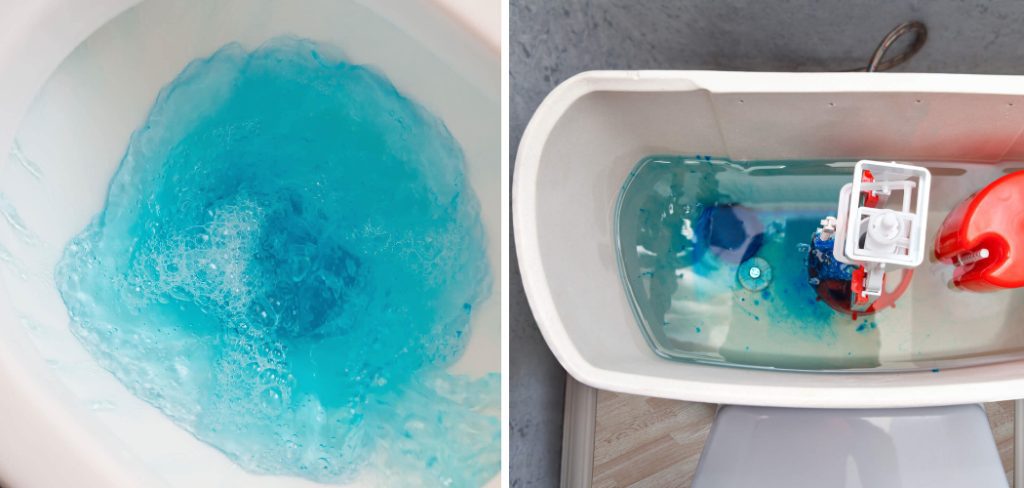
Making toilet water blue is not just about adding a splash of color to your bathroom; it’s about maintaining cleanliness and ensuring a fresh scent with every flush. Whether you’re aiming for a visually appealing look for your guests or wanting to keep track of the cleanliness of your household toilets, turning the water blue can achieve these goals effectively.
This guide will walk you through the simple steps required to safely and effectively achieve that crisp, vibrant blue in your toilet bowl, using items that are easily accessible and environmentally friendly. Keep reading to learn how to upgrade your bathroom experience with a touch of blue.
Why Blue?
Before we dive into the process of making toilet water blue, why specifically blue? Blue is not only a pleasing color to look at, but it also has some practical benefits for bathroom hygiene.
Blue is known for its calming and refreshing qualities, which can make your bathroom experience more pleasant. Additionally, blue-tinted water can help mask any unpleasant odors in the toilet bowl, making your bathroom smell cleaner and fresher.
Overall, adding blue to your toilet water not only looks visually appealing but also helps maintain cleanliness and provide a pleasant bathroom experience.
What You Will Need
To make toilet water blue, you will need the following items:
- Blue Dye or Coloring Tablet: This is the main ingredient that will give your toilet water its blue color. You can find these in most grocery stores or online.
- Toilet Bowl Cleaner: It’s important to use a cleaner specifically made for toilets, as it will not damage your toilet and will help with cleaning at the same time.
- Protective Gloves: While this process is safe, it’s always a good idea to protect your hands by wearing gloves.
- A Toilet Brush: This will be used to scrub and mix the dye in the water for an even color distribution.
Once you have everything you need, it’s time to start making your toilet water blue!
10 Easy Steps on How to Make Toilet Water Blue
Step 1. Safety First:
Before beginning this process, make sure to don your protective gloves. Even though it’s safe for your toilet, handling dye could stain your hands or damage your skin. It’s also advisable to wear old clothing or an apron to protect your outfit from potential splashes or spills.

Ensuring your own safety and cleanliness sets the stage for a smooth and worry-free process. Once you’re adequately protected, you’re ready to move on to the next step of transforming your toilet water into a refreshing shade of blue.
Step 2. Clean Your Toilet:
The first action towards transforming your toilet water into a vibrant blue is ensuring the toilet bowl is clean. Use your toilet bowl cleaner and toilet brush to scrub every inch of the bowl, paying special attention to the underside of the rim and any areas with hard water stains or buildup.
This step is crucial; a clean surface will allow the blue dye to disperse evenly, resulting in a more uniform and visually appealing result. After thoroughly scrubbing, flush the toilet to rinse away any remaining cleaner and debris. Now, your toilet is prepped and ready for the next step in the process.
Step 3. Introduce the Blue Dye:
With your toilet cleaned and prepped, it’s time to introduce the blue dye or coloring tablet to the water. Carefully pour the recommended amount directly into the bowl if you’re using a dye. Place the tablet in the toilet tank for those using a coloring tablet.
This will ensure that every flush releases a bit of the dye, gradually changing the water to blue over several flushes.
Handle the dye or tablet with care to avoid staining your hands or the surrounding area. After adding the dye or tablet, wait a few moments to observe the beginning transformation of your toilet water into a beautiful blue hue.
Step 4. Mix the Dye Thoroughly:
After introducing the dye or tablet into the toilet bowl or tank, it’s crucial to ensure that the color is evenly distributed throughout the water. If you’ve added dye directly to the bowl, use a toilet brush to gently stir the water, ensuring the dye mixes well. Be careful during this process to prevent splashing.
For those who placed a tablet in the tank, a few flushes will be required for the dye to fully mix with the water in the bowl. This step guarantees that the whole toilet water turns a consistent shade of blue, enhancing the visual appeal and ensuring uniform coverage.
Step 5. Allow the Dye to Set:
Once you have thoroughly mixed the dye with the toilet water, it’s time to allow it to set. Leave the toilet undisturbed for about 15-30 minutes. This resting period lets the dye fully adhere to the water, ensuring the color remains vibrant and long-lasting with each flush.
While waiting, you might want to open a window or ventilate the bathroom to avoid any strong smells from the cleaning products. This step is crucial for achieving a deep, enduring blue color that truly transforms your bathroom experience.
Step 6. Test the Color Intensity:
After allowing the dye to set, it’s time to test the color intensity of your toilet water. This can be done by simply flushing your toilet to see how the water looks. If the blue color appears too light, you can add a bit more dye to achieve the desired shade. Conversely, if the color is too dark for your liking, flushing the toilet several times will help to dilute the intensity.
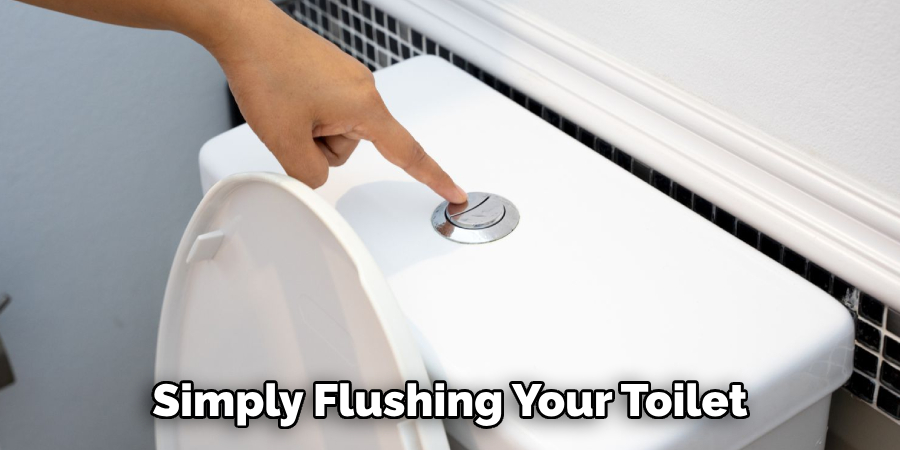
It’s all about finding the perfect balance that suits your preference for a visually appealing and refreshing toilet watercolor. This step ensures that you have full control over the aesthetic of your bathroom hygiene experience.
Step 7. Check for Stains:
With the blue dye fully mixed in and set, it’s time to check for any stains on the inside of your toilet bowl. If you notice any remaining hard water stains or grime, use a toilet brush and cleaner to scrub them away. This step ensures that your toilet looks visually appealing and maintains a high level of cleanliness.
Step 8. Final Flush and Inspection:
Perform a final flush to ensure that the dye is fully integrated and the water runs clear of any excess dye particles. This step is crucial to confirm that the color distribution is even and to your satisfaction. Inspect the toilet bowl and the surrounding area for any spills or stains that might have occurred during the process.
Clean up any dye spills immediately to prevent permanent staining. This final inspection ensures that your toilet has a refreshing new blue hue and is also clean and tidy, reflecting your dedication to maintaining a pristine bathroom environment.
Step 9. Ongoing Maintenance:
To maintain the vibrant blue color of your toilet water, it’s important to keep up with regular maintenance. This may involve periodically adding more dye or dropping in another tablet once the color begins to fade.
Additionally, regular toilet bowl cleaning is essential to prevent any buildup that could affect the color’s intensity and uniformity. Monitoring water levels and ensuring your toilet’s internal mechanics are functioning properly will also help maintain the desired shade of blue. Remember, consistency in care and maintenance is the key to preserving the refreshing blue hue.
Step 10. Enjoy Your Transformed Bathroom:
With the process complete and your toilet water now a beautiful shade of blue, it’s time to enjoy the fruits of your labor. This simple yet impactful change can significantly alter the aesthetic of your bathroom, creating a more inviting and refreshing environment.
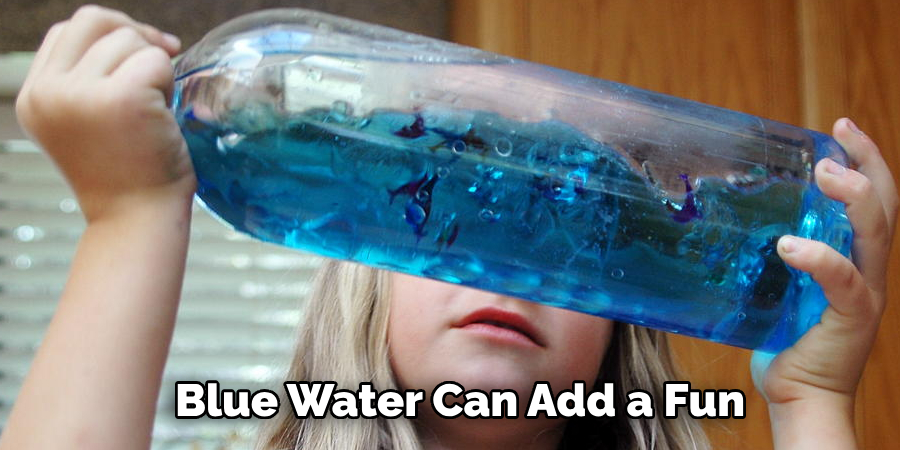
The vibrant blue water can add a fun, unexpected pop of color that surprises guests and delights family members. Remember, the transformation doesn’t have to stop here; consider matching bathroom accessories or adding complementary colors to enhance the overall ambiance. Enjoy the new look of your bathroom, and take pride in your successful DIY project.
By Following these 10 simple steps, you can easily transform your toilet water into a vibrant blue color that elevates your bathroom experience. It adds a touch of fun to an otherwise mundane task and reflects your commitment to maintaining a clean and visually appealing environment.
5 Additional Tips and Tricks
- Use Automatic Bleach Tablets: Opt for automatic bleach tablets that are specifically designed to turn the water blue. These tablets not only clean the toilet bowl but also lend a refreshing hue of blue to the water with each flush. Remember to follow the usage instructions carefully to ensure safety and effectiveness.
- DIY Blue Toilet Bowl Cleaner: You can also make your own blue toilet bowl cleaner using simple household ingredients. Mix equal parts of baking soda and citric acid together, add a few drops of food coloring, and mix well. Use this mixture to scrub the inside of the toilet bowl for a natural blue hue.
- Add Essential Oils: If you want to add a pleasant scent to your blue toilet water, consider adding a few drops of essential oils such as lavender, eucalyptus or lemon. Not only will it make the water smell nice, but it also has added cleaning and disinfectant properties.
- Use Blue Toilet Paper: Another option for achieving blue toilet water is to use blue-colored toilet paper. This may not be as long-lasting as the other methods, but it can add a fun and colorful twist to your toilet bowl.
- Try Different Shades of Blue: Don’t limit yourself to just one shade of blue for your toilet water. Experiment with different food coloring or products to achieve different shades, from light sky blue to deep ocean blue. This can add variety and interest to your bathroom experience.
Overall, there are many ways to make your toilet water blue and add a touch of freshness to your bathroom. Find the method that works best for you, and have fun with it!
5 Things You Should Avoid
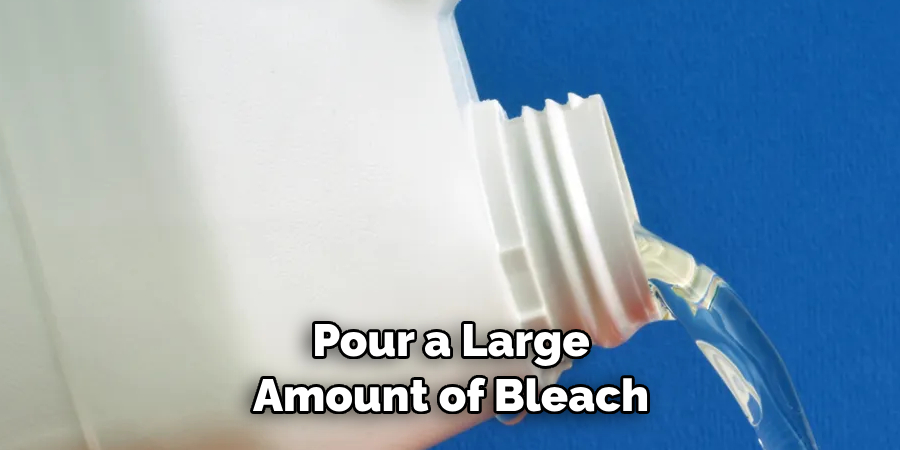
- Overusing Chemicals: While it might be tempting to pour a large amount of bleach or chemical cleaners into the toilet to achieve a deeper blue color, overuse can damage the plumbing system and harm the environment. Stick to recommended amounts.
- Using Non-Sanitary Items for Color: Avoid using non-sanitary items like fabric dyes or non-food-grade colorants. These substances can be harmful if they come into contact with skin or are accidentally ingested.
- Ignoring Safety Instructions: When working with bleach tablets, chemical cleaners, or DIY mixtures, always read and follow the safety instructions to avoid harmful exposure. Gloves and eye protection are often advisable.
- Neglecting Regular Cleaning: Relying solely on blue toilet water to indicate cleanliness can lead to neglecting regular cleaning and maintenance of the toilet bowl and seat. Bluewater is aesthetic and should complement, not replace thorough cleaning.
- Disregarding Environmental Considerations: Consider the environmental impact of the products used to turn toilet water blue. Opt for eco-friendly and biodegradable options whenever possible to minimize harm to waterways and aquatic life.
By avoiding these common mistakes, you can enjoy the benefits of blue toilet water without any negative consequences.
Is Blue Water Good for Toilets?
Yes, blue water can be good for toilets.
Firstly, the blue hue can mask any stains or discoloration in the toilet bowl and make it appear cleaner. Secondly, using bleach or other cleaning products to achieve the blue color can help disinfect and sanitize the toilet bowl.
Lastly, having colored water in your toilet can add a touch of fun and aesthetics to your bathroom experience. However, using safe and recommended methods for achieving blue water is as important as not overusing chemicals or neglecting regular cleaning.
So, make sure to follow our tips and tricks for safely enjoying blue toilet water in your home.
Why Does Blue Toilet Water Turn Pink?
If you notice that your blue toilet water has turned pink, don’t panic. This is a common occurrence and can happen due to a few reasons.
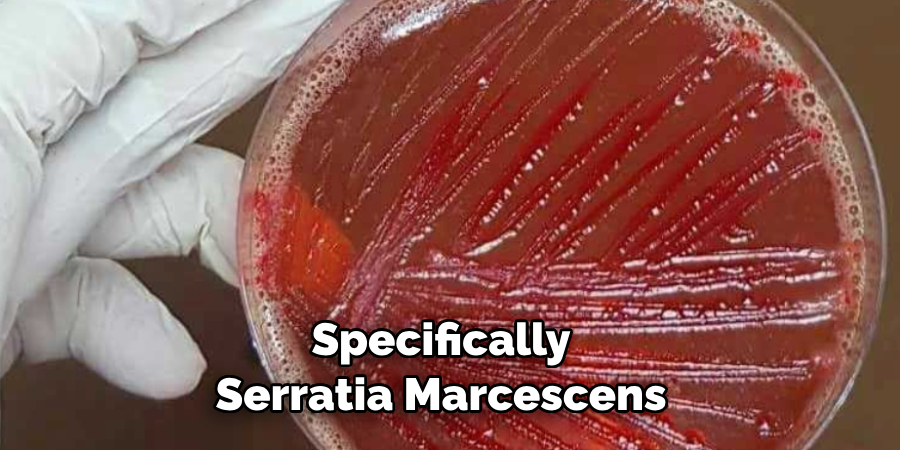
- Bacteria Growth: Pink bacteria, specifically Serratia marcescens, can grow in moist and warm environments, like the inside of a toilet bowl, causing the water to turn pink.
- Mineral Build-up: If you have hard water with high levels of iron or manganese, it can react with certain cleaning products and cause a pink residue to form in the toilet bowl and water.
- Chemical Reaction: Some chemicals, like bleach or ammonia, can cause a pink color when mixed with certain minerals or bacteria present in the water.
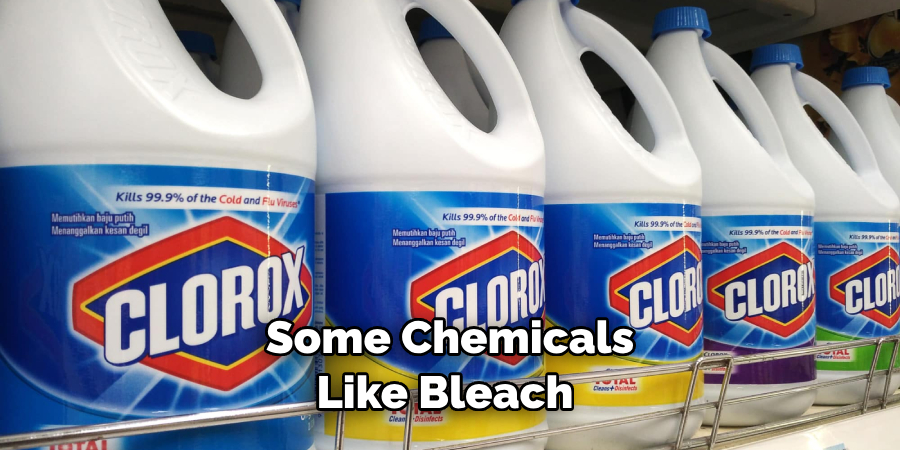
In most cases, the pink color is harmless and can easily be remedied by scrubbing and cleaning the toilet bowl regularly. However, if you notice persistent pink water, it is best to consult a plumber or water treatment professional for further assistance. Maintaining good hygiene and using safe cleaning methods can help prevent pink water in your toilet bowl.
How Can You Combine Blue Toilet Water with Other Cleaning Methods?
Blue toilet water can be a great addition to your regular cleaning routine, but it shouldn’t replace other cleaning methods altogether. To ensure a thoroughly clean and sanitized toilet, consider combining blue water with these cleaning methods:
- Baking Soda and Vinegar: Baking soda and vinegar are natural cleaners that can help remove stains and disinfect the toilet bowl. Simply sprinkle baking soda inside the bowl, add a few drops of vinegar, let it sit for a few minutes, and then scrub with a toilet brush.
- Bleach Tablets: As mentioned earlier, bleach tablets can help achieve blue water while also disinfecting and deodorizing the toilet bowl. Use them according to the instructions for best results.
- Hydrogen Peroxide: Hydrogen peroxide can also be used as a natural and safe cleaner for the toilet bowl. Mix equal parts of hydrogen peroxide and water, pour it into the bowl, let it sit for 30 minutes, then scrub and flush.
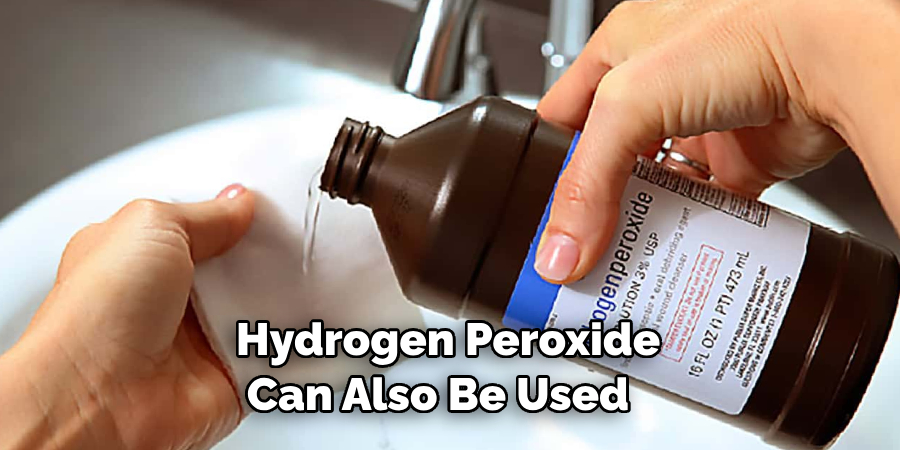
Combining these methods with blue toilet water lets you have a sparkling, clean, and fresh-smelling toilet. Just remember to always follow safety precautions and not mix different cleaning products together, as they can produce harmful fumes.
Conclusion
In conclusion, how to make toilet water blue is more than just a cosmetic change; it can enhance the aesthetic appeal of your bathroom while also contributing to hygiene and cleanliness.
By selecting safe, eco-friendly options and adhering to proper usage guidelines, you can enjoy the benefits of blue toilet water without compromising the environment or plumbing system. Whether you opt for bleach tablets, automatic bleach dispensers, food coloring, or commercial blue water products, the key is moderation and maintenance.
Remember to combine the visual appeal of blue water with regular cleaning practices to ensure a truly clean and fresh bathroom environment. The magic of blue toilet water lies in its ability to marry aesthetics with functionality, creating an inviting and sanitary bathroom space.